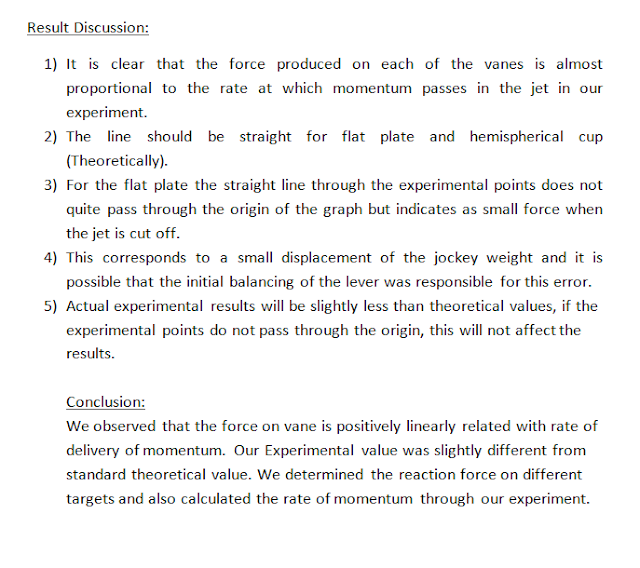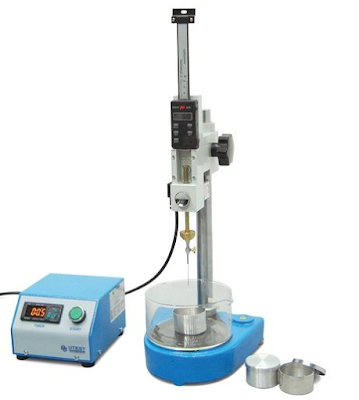Measurement of Impact of Jet on Flat Plate Vane and Hemispherical Cup lab report
Introduction:
Impact of jets apparatus enables experiments
to be carried out on the reaction force produced on Vanes when a jet of water
impacts on to the vane. The study of these reaction forces is an essential step
in the subject of mechanics of fluids which can be applied to hydraulic
machinery such as the Peloton wheel and the impulse turbine. The jet is
directed on to the vanes of a turbine wheel, which is rotated by the force
generated on the vanes due to the momentum change or impulse that taken position
as the jet hit the vane. Water turbines working on this impulse principle have
been constructed with outputs of the order of 100000 kW and with efficiencies
greater than 90%.
Objectives:
- To determine the momentum experimentally through impact of jet experiment.
- To investigate the reaction force produced by the impact of a jet of water on to various target vanes.
- To examine the producing of mechanical work from fluid under pressure is to use the pressure to accelerate the fluid to a high velocity in a jet.
Theory:
The momentum equation based on Newton’s 2nd law
of motion states that the algebraic sum of external forces applied to control
volume of fluid in any direction equal to the rate of change of impetus of this
direction. The outer forces include the element of the weight of the fluid and
of the forces exerted outwardly upon the boundary surface of control volume. If
a vertical water jet moving with velocity ‘V’ made to strike a target (Vane)
which is free, to move in vertical direction, force will be exerted on the
target by the impact of jet. Applying momentum equation in x- direction, force
exerted by the jet on the vane. Consider a vane symmetrical about the x-axis as
shown in Figure-1. A jet of fluid flowing at the rate of m kg/s along the
x-axis with the velocity u0 (m/s) strikes the vane and is deflected by it through angle β, so that the
fluid omit the vanes with the velocity U1(m/s) inclined at an
angle β to the X-axis. Changes in elevation and in piezometric force in the jet
from hitting the vanes to omit are
neglected.
Apparatus:
1. Impact of
jet apparatus
2. Hydraulic
bench
3. Stop
watch
Procedure
- Write down the topical dimension area of the tank and diameter nozzle the diameter .
- When jet is not going, write down the place of the upper disc or plate.
- Start water supply to the nozzle.
- The jet hit the disc, the disc moves upward; now place the weight to take back the upper disc to its Origin place.
- At this position find out the discharge and note down the weights placed above the disc.
- The time for 5L of water discharge were counted for every step with a stop watch.
- The procedure is repeated for different values of flow rate by reducing the water supplying steps.
Data
Collection:











Your experiment is very important or helpful for us...... thanks
ReplyDeleteNice Post!!
ReplyDeletePlease look here at Bitumen 60/70
Nice Post!!
ReplyDeletePlease look here at Bitumen Emulsion